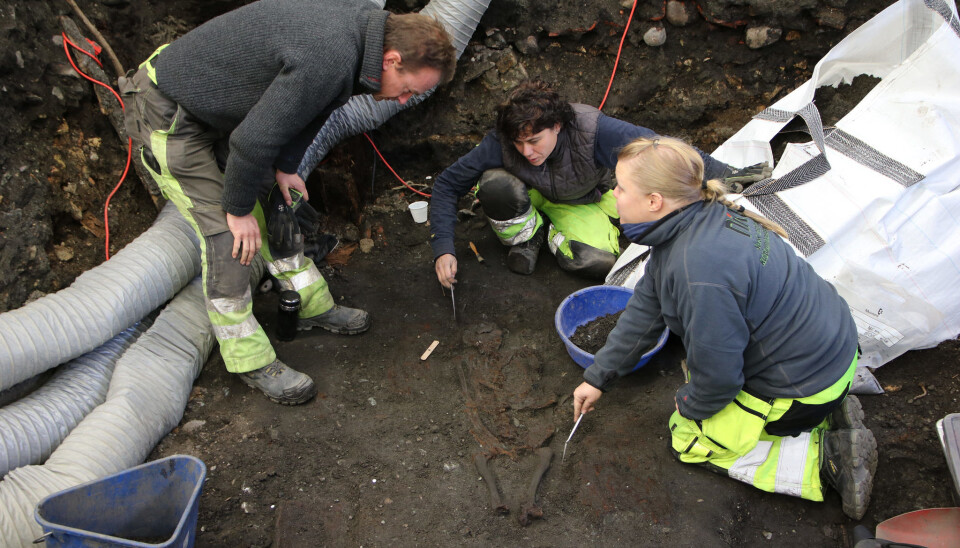An article from NIKU - Norwegian Institute for Cultural Heritage Research

Unknown Viking settlement could be hidden beneath ancient church
In late 2016, archaeologists found what is believed to be the remains of St. Clement’s Church in Trondheim. But even more ancient secrets could be hiding beneath the ruins.
The site is situated at Søndre gate in central Trondheim, and in February this year the archaeologists started the second phase of the excavation.
The archaeologists from the Norwegian Institute for Cultural Heritage Research (NIKU) are currently investigating a larger area than before. The bigger picture surrounding the remains of the church is emerging, and the archaeologists expect a few surprises over the coming weeks.
The team working on this historical site are particularly excited about the prospects of finding the remains of the eastern choir.
Laser scans and 3D documentation
Below the church ruins lie even older archaeological remains that have sparked huge interest in Norway. As a result of this, the stone ruins are to be dismantled in order to gain access to the levels below.
In order for the stones to be removed, the whole ruin is currently being laser and photo scanned. This is an advanced digital documentation method designed to create an exact model of the ruin.
The documentation will also enable the creation of 3D-models and other virtual experiences in a future visitor centre.
Here are an example of a 3D-photoscan from a few months back:
Mysterious layer of sand and Viking age relics
Below the ruins of the church of St. Clement lies the remains of an even older building with massive earth postholes that experts from NIKU will be studying further.
There is also a mysterious layer of sand below the ruins. This layer will be studied by geologists. The archaeologists are working on a hypothesis that the sand layer might result from natural events at the time – and that it is not man made. Either way, the sand has possibly protected the newly-discovered layers below the ruins.
Under the mysterious layers of sand, a meter of cultural layers dating from the Viking age (900-990 AD) has appeared. These are layers the archaeologists are particularly excited to excavate.
It is very likely that Trondheim’s early history will have to be rewritten as these layers may well prove that there was a Viking settlement here at a much earlier date than previously believed.
The excavation will finish by the Summer
Work on the site will continue this Spring and archaeological investigations will be carried out by personnel from The Norwegian Institute for Cultural Heritage Research (NIKU). The cost of this historic excavation is approximately 21 million NOK and is financed by the Directorate for Cultural Heritage.






























